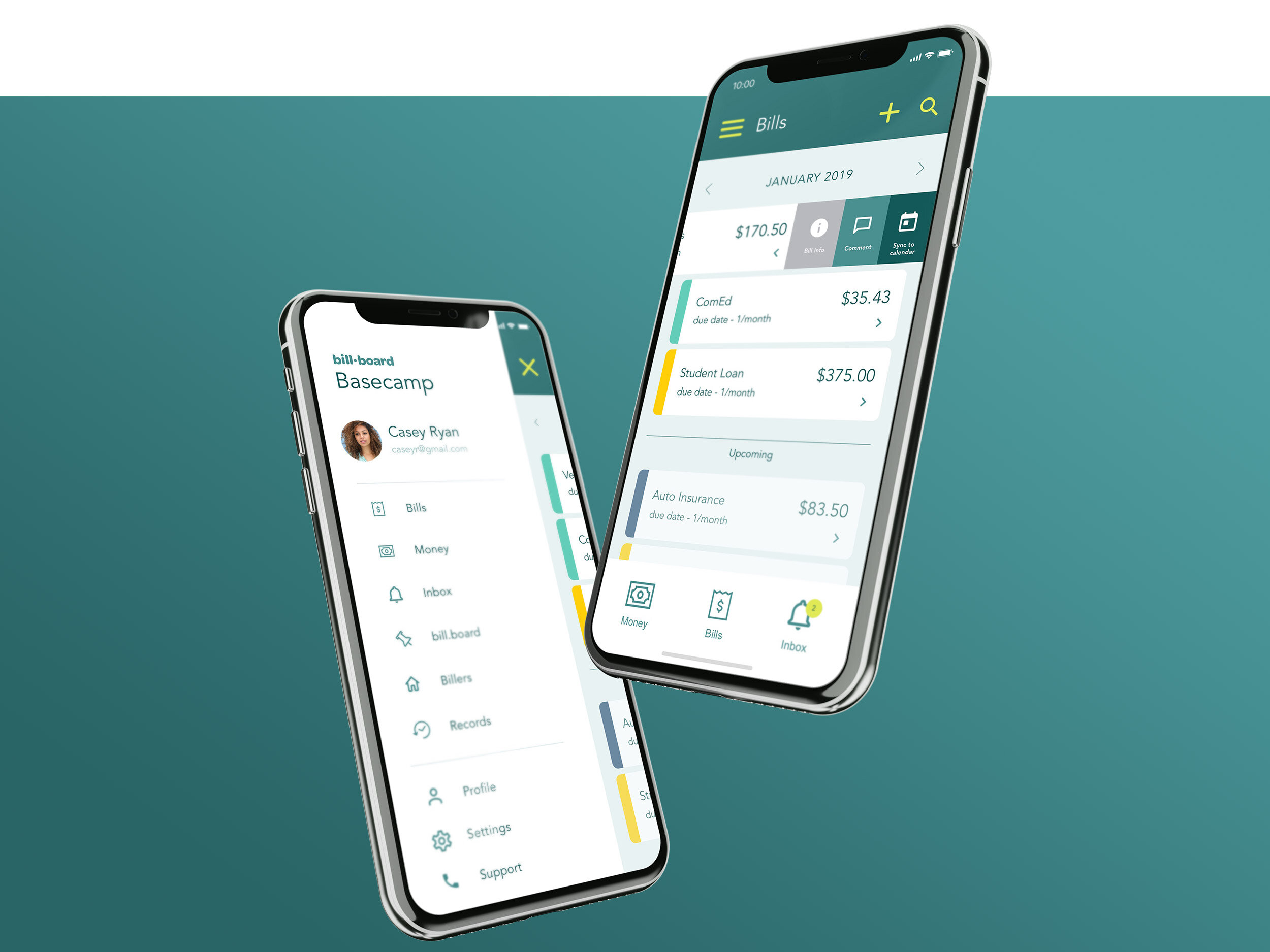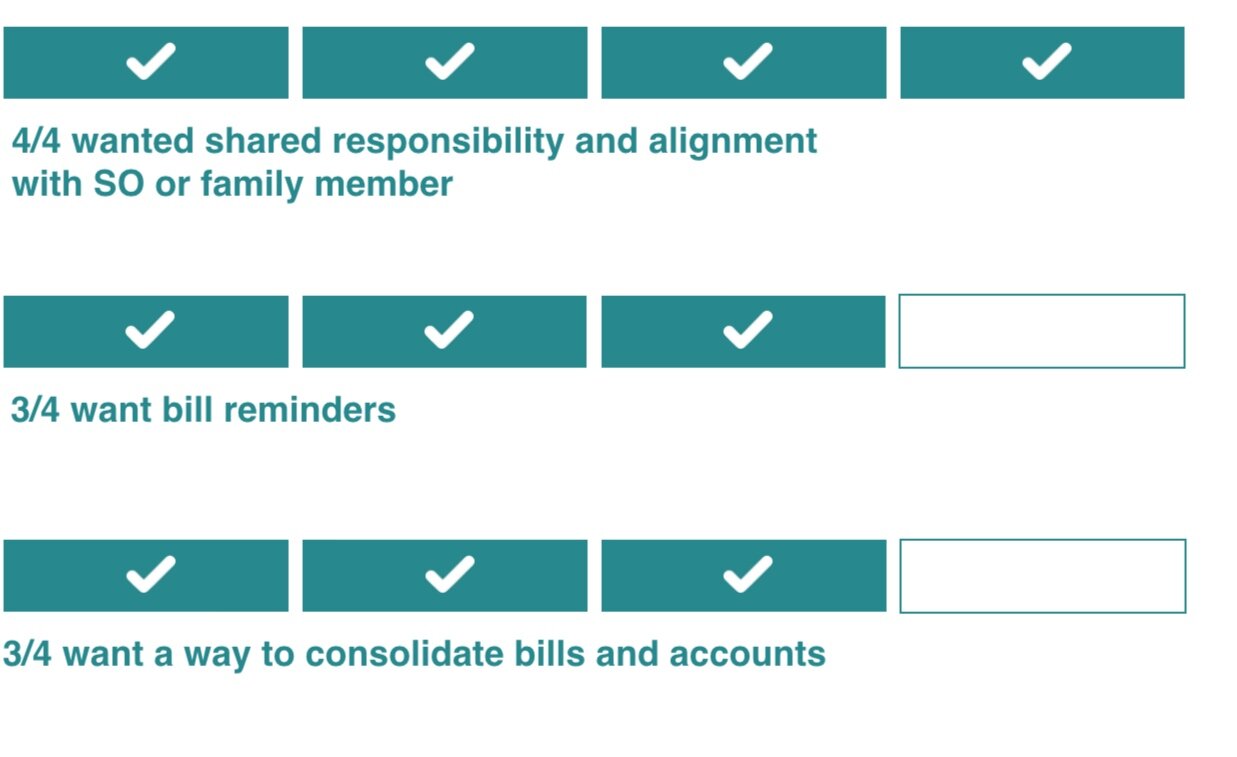Bill Board
The bill.board app was designed in January 2019 as the one and only financial billing app that allows two or more users complete visibility on shared bills. Users can pay directly through the app, connect their bill and bank accounts and choose payment methods. From there, bill.board keeps tabs and pays all upcoming bills for them, avoiding any missed payments and any frustrating money conversations between couples, parents, or roommates. Below dives into my process for designing a viable solution for the target users and where this product can fit in the current competitive space. The bill.board app was created for iOS using Sketch.

The Process.
Discover
The “define” phase is a crucial first step in the UX process in order to establish empathy for our users and gain a clear idea of what we are solving and who we are solving for. After observing and identifying through user interviews and other immersion techniques I turned my findings into an actionable problem statement: Pairs find it difficult to share financial responsibility, coordinate bills & bank accounts and remember bill due dates.
Research & Analysis
The goal was to learn about current competitors, what is successful for them, what is unsuccessful for them, and how bill.board can fit in the competitive space by analyzing their features and prioritizing ours based on user’s needs, wants and pain points discovered from user interviews. This provided a clear focus to start brainstorming on the design functionality and framework.
User Goals & Flows
Two personas were created based upon the research in order to represent the user types that might use the bill.board app. With these two personas in mind, a first time user flow was created to ensure the flow was a simple and streamlined experience for users to successfully reach their goals. An initial site map was created and then revised after running a series of card sorting tests.
Prototype
Sketches were sketched, wireframes were wired, and screens were designed. Between each of those steps functionality and layouts were reviewed by wireframe testers, checked for ADA compliance, refined and revised in order to create a high fidelity prototype ready for more testers. In order to have effective user tests with no involvement, it was essential to ensure the designs and prototypes were as real as possible; from all buttons being clickable down to the copy.
Test
Two different scenarios were created to set the stage for six testers. Scenario A: testers were tasked with creating an account, and scenario B: testers were tasked as a returning user to set up their first bill . During the in-person user tests, my job was to observe and take notes. I witnessed users moving through the app intuitively at times, but more importantly, I witnessed them struggle. Those key usability insights were used for determining the next steps.
Revise
Patterns found in the usability tests were used to determine which areas of the app needed to be revised. The findings consisted of ensuring our users of bill.board’s security (and gaining their trust), simplifying instructions, and simplifying the main sticky navigation to house the most important features for easy thumb access. From there an actionable list was created in addressing these areas.

User Interviews
Four people were interviewed in order to discover pain points involved with couple’s finances. The focus for these interviews was to determine how the pairs balanced responsibility, how they budget, how they save, and how they communicate. Two particularly interesting interviews shifted the focus of the problem statement; those were Sam and Theresa. Sam was solely responsible for his senior mother’s finances and bills and Theresa had a daughter recently in college. The problem statement went from focusing on couples to focusing on pairs in order to be more inclusive of the apps different uses.
Interview Quotes
“My husband takes care of all the finances. I do not enjoy it at all but wish I had visibility so I can double check things are paid since that’s been an issue in the past.”
— Liz, 27
“I use my banking app to pay my bills, and since my family all has accounts there, it’s easy to transfer money to our daughters account if we need to.”
— Theresa, 57
“I was in charge of my mother’s finances and bills as she got older. I have siblings but it was convenient for me to be responsible since I lived close.”
— Sam, 56
“I like when my husband and I are both working towards something, together.”
— Samina, 31

Competitive Analysis
First Time User Flow
Site Map
Persona A
Persona B



